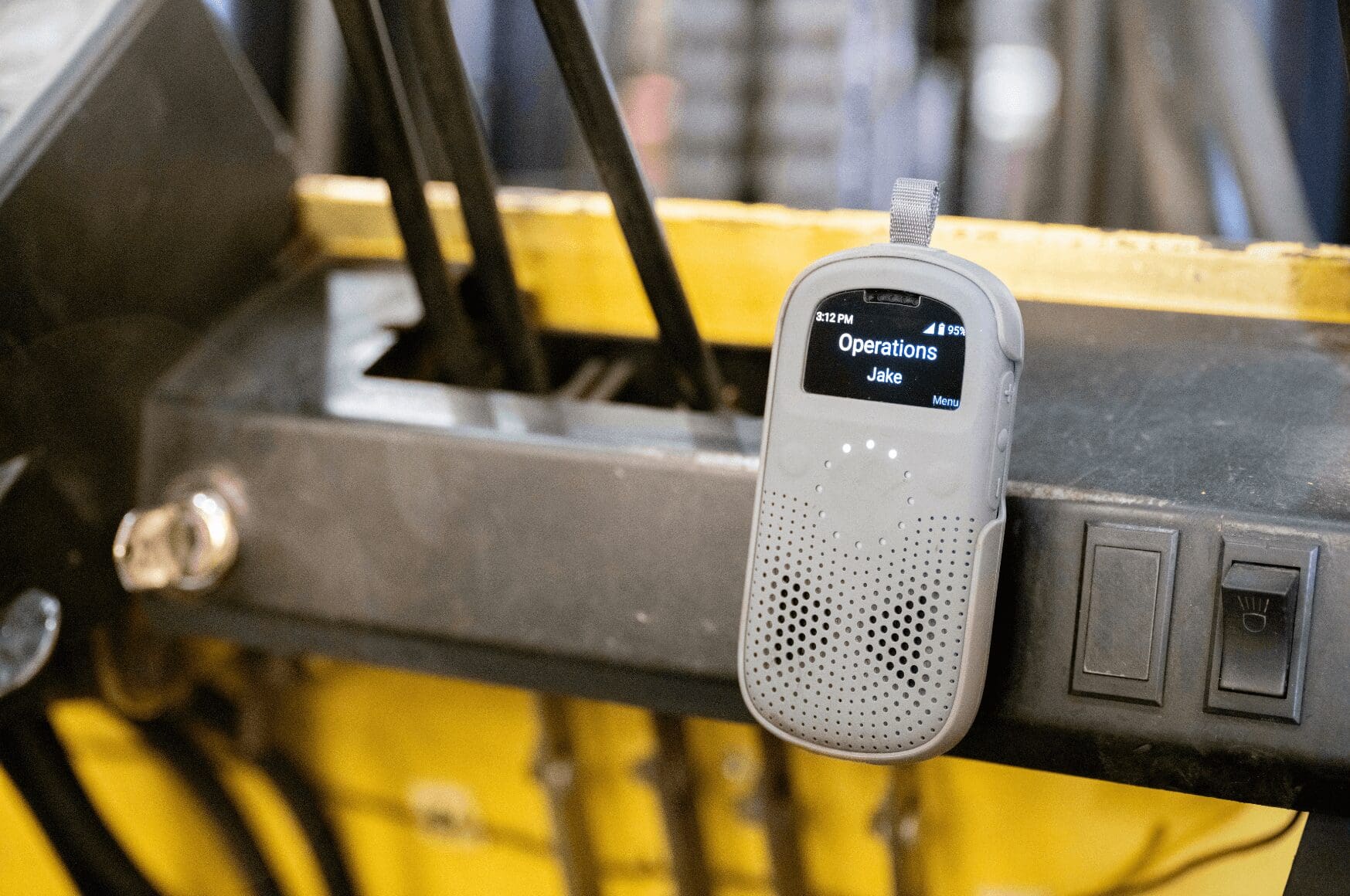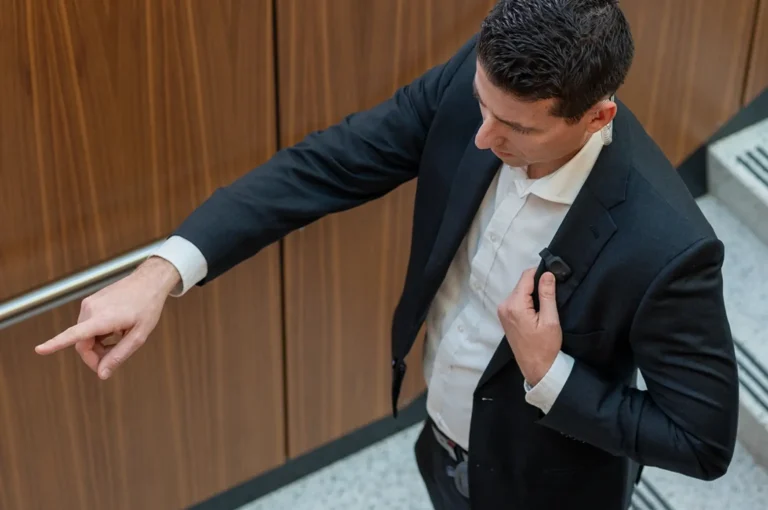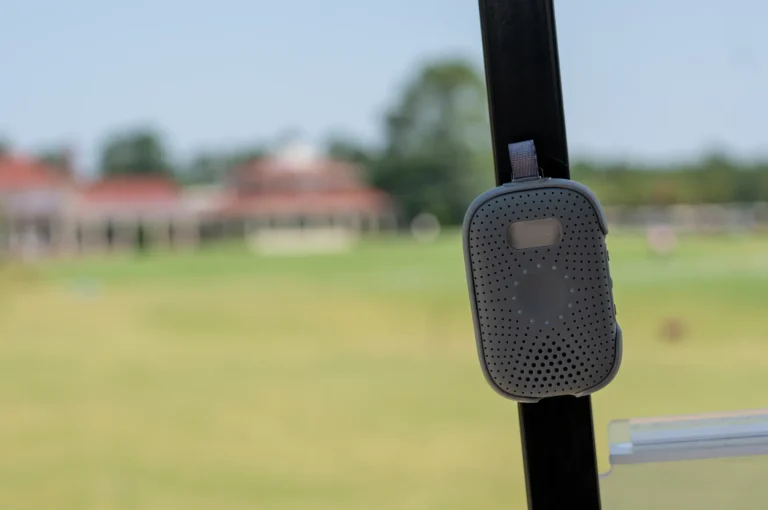Walkie-talkies have become popular communication devices in a variety of scenarios. Although often known for their recreational use, top-rated walkie-talkies can be effective in certain professional environments as well. If you’re communicating across long distances or different locations, you might wonder if long-range walkie-talkies are the right choice for you.
Much like any communication device, there are advantages and disadvantages to this type of two-way radio. It may be the right choice in some instances because of benefits including affordability and ease of use, but there are also limitations to this type of device.
To help you decide what type of communication device works best for your team, we’re breaking down everything you need to know about long-range walkie-talkies to see if they’re the right fit for you.
Let’s Talk About It: Long-Range Walkie-Talkies on the Job
Many professional teams use a two-way radio system to communicate during their shifts. These types of handheld radios have many features that make communication simple between teams. While all walkie-talkies are two-way radios, not all two-way radios are walkie-talkies.
Walkie-talkies are a specific type of two-way radio, and there are specific types of walkie-talkies with long-range capabilities. When you’re looking for long-range communication devices for your team in industries such as hospitality, manufacturing, or healthcare, this is one of the devices you might consider.
Get to know Relay’s long-range two-way radios at your own pace in our on-demand video demo center. We feature audio and durability tests, product demonstrations, and more!

How Far Can Long-Range Walkie-Talkies Transmit?
Considering the phrase “long-range” is in the name, it’s expected that this type of walkie-talkie works across longer distances than your standard device. When you need a device that allows for long-distance communication, it’s crucial to know the range of transmission for the long-range radio you choose.
A standard walkie-talkie can generally transmit messages across a range of one to three miles, or two to five kilometers. Comparatively, some of the best traditional long-range walkie-talkies can transmit up to 15 kilometers or nine miles.
What Factors Affect the Range of a Walkie-Talkie?
When it comes to the range of long-range walkie-talkies, the distance will change in different scenarios. Many factors contribute to the range of a walkie-talkie, and understanding these factors can make your communication more effective.
Here are some of the most common factors that impact radio range:
- Type of device: Even when you’re looking at long-range walkie-talkies specifically, the range is going to be impacted by the type and quality of the device.
- Frequency of the radio: Since some walkie-talkies rely on radio waves for communication, there can be aspects of the frequency and signal strength that may impact the distance and range.
- Type of environment: Unlike communication devices that rely on cellular or WiFi networks, traditional walkie-talkies can be impacted significantly by the type of environment. When there’s open terrain without any interruptions, the range can be much farther.
- Obstructions to the signal: There can be other obstructions to the radio signal as well, such as walls, metal objects, or buildings. The range of your long-range walkie-talkie will be different if you’re communicating in different locations, inside a building, or across different floor levels.
- Weather: Weather is a factor that nobody can control, but it can contribute to the range of your communication device. When there’s harsh weather, such as heavy rain or thunderstorms, you may experience interruptions or interference in your communication.
Increasing the Range of Your Walkie-Talkie
Considering how many factors can impact the range of your two-way radio, you may realize the range of your device isn’t static. Some factors can obstruct the range, but there are ways to increase the range as well.
Aside from preventing and minimizing obstructions such as crowded radio channels, you can also use a radio repeater to increase the range of your device.
If you’re looking for a communication tool that can send and receive messages further than a few miles, consider a more modern solution. Smart radios like Relay can communicate from one device to another nationwide, similar to a cell phone.

What Are the Advantages and Disadvantages of Long-Range Radios?
Walkie-talkies have been around in some form since the 1930s, but the use of them is far more mainstream now. Frequently, walkie-talkies and other two-way radios are the main method of communication in industries such as construction, security, hospitality, and manufacturing.
Even though these devices are often touted for their accessibility and affordability, there are also downsides, such as their limited range and lack of flexibility when it comes to communicating across longer distances. Here’s an overview of the main pros and cons of long-range walkie-talkies.
Pros of Long-Range Walkie-Talkies
- Affordable option compared to other devices such as cell phones
- Has a wider range than standard walkie-talkies
- Works well for small teams
Cons of Long-Range Walkie-Talkies
- Range can be impacted by the environment
- Bulky design compared to smart radios
- May experience radio interference or other signal disruptions
There are several things to consider when determining whether a long-range walkie-talkie is the right choice for your team. This type of communication device is usually best for small teams that are communicating within one building or an open space without obstructions.
If you’re planning on communicating across a larger team throughout different floors, buildings, or locations, the limitations of walkie-talkies may make communication challenging.
What Features Should I Look For?
Not all long-range devices are created equal. Many two-way radios have features in common, but the capabilities will vary depending on the brand and model you choose. If you’re planning on purchasing walkie-talkies for business use, here are some of the features you should look for:
- Durable Design: Durability is one of the advantages of most walkie-talkies, but not all walkie-talkies can withstand extreme conditions. Consider what type of environment you’ll be working in and what your radio needs to withstand to avoid replacing radios frequently.
- Multiple Channels: Crowded channels are one of the main culprits of radio interference. One of the solutions to this is having multiple channels available so that different teams aren’t forced to talk over each other.
- Long-Distance Range: When compared to mobile devices, the range of walkie-talkies is relatively limited. It’s important to choose a walkie-talkie that has long-range capabilities, and know that the distance advertised may not always be accurate, depending on the environment.
- Frequency: Walkie-talkies and other two-way radios usually come in Very High Frequency (VHF) or Ultra-High Frequency (UHF) signals. There are pros and cons to both, but this is something to consider when choosing a device.
Want a radio with proven durability, up to 1,000 channels, and nationwide range? 👇
Swap Your Long-Range Two-Way Radios with Relay
When it comes to portable radios that work in a professional environment, there are many options out there. Long-range walkie-talkies offer a wider range of communication than your standard walkie-talkie, but there are still many limitations to this type of device.
With Relay, you get nationwide range from redundant WiFi and cellular connectivity. Whether you need to communicate across a building, a few acres, or the country, Relay devices can replace two-way radios, offering longer range, louder audio, and clearer communications.
Instead of relying on bulky radios and navigating frequent interference, team members can connect on any device, choosing between RelayX or RelayM devices, our smartphone app, or our laptop dashboard. Relay supports both private conversations and group communications.
We don’t stop there. With Relay, you also get added features that traditional radios lack, including real-time language translation, GPS tracking, and incident response capabilities.
To find out how Relay’s walkie talkie alternative makes communication clear and simple for teams nationwide, read some of our customer stories or book a demo with one of our experts today.

FAQs
What is considered a long range for walkie-talkies?
A standard walkie-talkie can typically reach between one to three miles, so a range over three miles is considered a long range. Most long-range walkie-talkies can reach between three and 15 miles, depending on numerous factors.
What are the different types of long-range walkie-talkies?
There are many types of long-range walkie-talkies, but these devices are typically divided based on their frequency. Some walkie-talkies are Very High Frequency (VHF) while others are Ultra High Frequency (UHF). There are also General Mobile Radio Service devices, or GMRS radios, that are licensed two-way radios.
Are there any license-free long-range walkie-talkies?
You can use some long-range walkie-talkies without a license. The walkie-talkies that require a license are known as GMRS radios. These two-way radios are licensed by the Federal Communications Commission and are used for short-distance, two-way voice communications.
Smart radios like Relay are also a great option if you’re looking for a license-free radio.
What is the best long-range walkie-talkie for outdoor communication?
When choosing a long-range walkie-talkie for outdoor communication, consider the capabilities of different radio types. Factors such as range, battery life, and durability will be important in outdoor environments. The two-way radios or walkie-talkies with the longest range are generally GSMR radios or cellular or Wi-Fi-based devices like smart radios.
How do I choose a long-range walkie-talkie?
The right long-range walkie-talkie can vary depending on what you’re using it for. In general, you’ll want to look for a device that has features such as push-to-talk, extended battery life, and multiple channels to prevent interference.
How do I set up and use a long-range radio?
Setting up a long-range walkie-talkie is similar to other two-way radio devices. If you’re looking for ways to extend the range of your walkie-talkie, you can choose to use a radio repeater. It’s also worth looking into what possible obstructions or interruptions may be minimizing your range.
How do I troubleshoot walkie-talkie range issues?
The main factors that influence walkie-talkie range are terrain, weather conditions, and obstacles such as buildings, mountains, or other structures that may get in the way. Signal strength can also play a role in limited range. To troubleshoot your walkie-talkie range, determine what may be getting in the way before looking into a new antenna or a radio repeater.
What is the battery life of long-range walkie-talkies?
The battery life of a long-range walkie-talkie can vary by brand and model. Generally, the battery life will range from 8 hours to 24 hours, depending on the frequency of use, volume level, and other factors.






